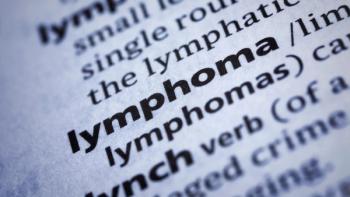The combination of Cabometyx (cabozantinib) plus Tecentriq (atezolizumab) outperformed novel hormonal therapy (NHT) when it came to progression-free survival (PFS; time patients live without their disease getting worse) in the second-line treatment of patients with metastatic castration-resistant prostate cancer (mCRPC), according to findings from the phase 3 CONTACT-02 trial.
Data from CONTACT-02 were presented at the 2024 Genitourinary Cancers Symposium.
The median PFS was 6.3 months with the Cabometyx/Tecentriq combination, compared to 4.2 months in the NHT arm. Additionally, at the six-month mark, 60% of patients in the two-drug arm were alive without disease progression, compared to 42% in the NHT arm. At 12 months, 25% and 18% in the Cabometyx/Tecentriq and NHT groups, respectively, were alive without disease progression.
The PFS benefit of the Cabometyx-based regimen extended to patients across most prespecified subgroups. Of note, the experimental combination led to a PFS improvement in those with liver metastases, patients who previously received docetaxel and those with bone metastases.
- Patients with metastatic castration-resistant prostate cancer who received Cabometyx plus Tecentriq tended to live longer before their disease got worse compared to those who received hormone therapy.
- The positive impact of the Cabometyx-based regimen on progression-free survival extended across various patient groups, including those with liver metastases, those who previously received docetaxel and those with bone metastases.
- Overall survival was similar between the two different treatment regimens.
- The combination therapy demonstrated manageable side effects, with diarrhea, decreased appetite, fatigue, nausea, and weakness being common. Treatment-related discontinuations and severe toxicities were higher in the Cabometyx/Tecentriq arm.
Findings from the interim overall survival analysis, which looks at the time from treatment to death of any cause, showed a median overall survival of 16.7 months in the Cabometyx group, compared with 14.6 months in the NHT arm. However, these findings were not statistically significant, meaning that the researchers could not say with certainty that one regimen was superior to the other when it came to overall survival. The six-month and 12-month overall survival rates in each arm, respectively, were 87% versus 79% and 62% versus 57%.
In the Cabometyx and NHT arms, respectively, the objective response rate (ORR; percentage of patients whose disease shrunk or disappeared) was 14% versus 4%, and the disease control rate (DCR) was 73% versus 55%. Partial responses were reported in 13% and 4% of patients; 1% of those in the Cabometyx arm had a complete response. Additionally, more patients in the Cabometyx arm experienced a reduction in the size of target lesions.
“CONTACT-02 is the first phase 3 trial of a (tyrosine kinase inhibitor and immune checkpoint inhibitor) combination to show statistically significant improvement in PFS in patients with (metastatic) CRPC,” said presenting author Dr. Neeraj Agarwal, a professor of medicine, presidential endowed chair of cancer research, and director of both the Genitourinary Oncology (GU) Program and the Center of Investigational Therapeutics at the Huntsman Cancer Institute (HCI) of the University of Utah. “These data support (Cabometyx plus Tecentriq) as a potential new treatment option for patients with (metastatic) CRPC who have progressed on an NHT.”
About the Trial
In the CONTACT-02 study, 507 patients were randomly assigned to receive Cabometyx plus Tecentriq (253 patients) or second-line NHT (254 patients). Treatment with NHT included Zytiga (abiraterone acetate) plus prednisone or Xtandi (enzalutamide).
The trial’s dual primary endpoints were PFS and overall survival in the Cabometyx/Tecentriq group. Secondary endpoints included ORR, radiographic PFS, prostate-specific antigen (PSA) response rate and safety. Time to PSA progression, symptomatic skeletal events, chemotherapy and pain progression were other key endpoints.
Patients 18 years and older with adenocarcinoma histology who had disease progression following prior treatment including NHT were able to enroll in the trial. Additional eligibility criteria included having measurable soft tissue metastasis outside of the pelvic region and an ECOG performance status of 0 or 1, indicating that they could perform all or most of their daily tasks independently. Those who were previously treated with docetaxel for locally advanced or metastatic castration-sensitive prostate cancer were also eligible for enrollment.
The median time to chemotherapy was not reached (NR) in both the Cabometyx and NHT arms. The median time to symptomatic skeletal events was 16.3 months compared with 13.2 months in each respective arm, and the median time to pain progression was 4.3 months versus 4.3 months. Investigators also reported a median time to deterioration of 2.2 months and 2.2 months in each arm via the European Organization for Research and Treatment of Cancer Quality of Life C30 questionnaire Global Health Status. Additionally, 10% and 12% of patients in each arm had a PSA response.
Dose Intensity and Side Effects
The median dose intensity — which describes the amount of an intended dose given — of Cabometyz, Tecentriq and NHT, respectively, was 94.0% (range, 22.0%-100.0%), 83.0% (range, 21.0%-100.0%) and 100.0% (range, 50.0%-100.8%).
Additionally, treatment-related side effects leading to discontinuation of any study component affected 13% of patients in the Cabometyx arm compared with 2% in the NHT arm.
Any-grade treatment-emergent side effects occurred in 97% of the Cabometyx arm versus 87% of the NHT arm, as well as grade 3/4 (moderate to severe) toxicities in 48% versus 23%, respectively.
The most common any-grade side effect in each respective arm included diarrhea (40% versus 4%), decreased appetite (38% versus 12%), fatigue (27% versus 17%), nausea (25% versus 11%) and weakness/lack of energy (25% versus 11%).
Treatment-emergent deaths were reported in 8% and 12% of patients in each arm.
For more news on cancer updates, research and education, don’t forget to subscribe to CURE®’s newsletters here.





